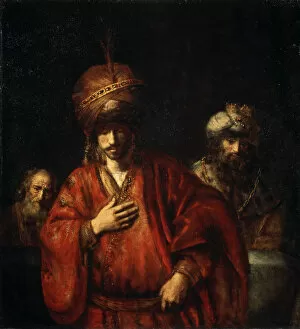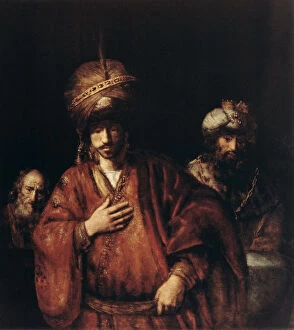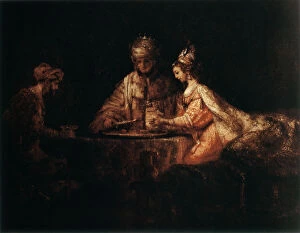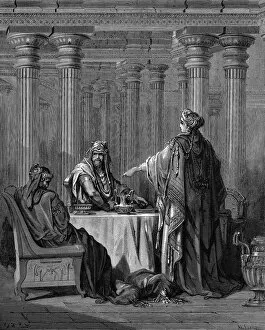Haman Collection (#2)
"Haman: The Villainous Foe in the Biblical Tale of Esther" In the ancient biblical story of Esther
For sale as Licensed Images
Choose your image, Select your licence and Download the media
"Haman: The Villainous Foe in the Biblical Tale of Esther" In the ancient biblical story of Esther, Haman emerges as a treacherous antagonist whose wicked plans threaten the lives of an entire community. Depicted in various artistic renditions, such as Tissot's "Esther feasts with the king, " Ernest Normand's "Esther denouncing Haman to Ahasuerus, " and other engravings capturing pivotal moments, Haman's malevolence is brought to life. As the narrative unfolds, we witness Haman laying his complaint before Zeresh, his wife, and friends. Consumed by envy and arrogance, he plots against Mordecai and all Jews living under King Ahasuerus' reign. However, fate takes a turn when Queen Esther bravely accuses him during a feast attended by both her husband and Haman himself. The tension escalates further when Ahasuerus discovers Haman pleading for his life to Esther—an engraving that captures desperation and fear etched on his face. Ultimately condemned for his evil intentions towards Mordecai and his people, Haman faces justice through being seized and hanged at King Ahasuerus' command. Centuries later, Purim ceremonies commemorate this triumph over adversity—a celebration of deliverance from imminent destruction orchestrated by this notorious villain. Through these depictions like "Purim ceremony 1712" or engravings showcasing "The punishment of Haman, " we are reminded that good prevails over evil. Haman stands as a cautionary tale—a reminder that greed-driven ambitions can lead to one's downfall. His legacy serves as a testament to bravery exhibited by individuals like Queen Esther who stood up against injustice despite overwhelming odds.












